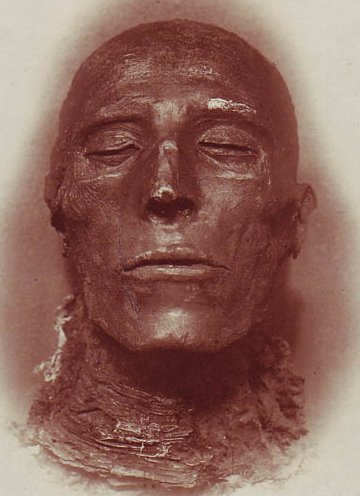Saturday, June 29, 2013
Blogging Sax Rohmer’s President Fu Manchu, Part Two
Sax Rohmer’s "The Invisible President" was originally serialized in Collier’s from February 29 to May 16, 1936. It was published in book form later that year by Cassell in the UK and Doubleday in the US under the title "President Fu Manchu." The novel is the first in the series to fictionalize real events with characters based on familiar figures in the US in the 1930s such as Huey Long and Father Charles Coughlin. More than one critic has noted the story may have influenced the classic Cold War conspiracy thriller "The Manchurian Candidate."
The hotel where Sir Denis Nayland Smith and his FBI counterpart, Mark Hepburn are staying is thrown into a panic over the unexpected arrival of James Richet, Abbot Donegal’s secretary, who is wanted by the authorities as a member of the Si-Fan. Richet arrives by taxi outside the hotel before collapsing. His corpse is discovered inexplicably covered with mysterious red spots.
When first introduced, Richet came under suspicion for no better reason than Smith detecting Eurasian blood in his background. Strangely, Smith’s valet Fey is also Eurasian and while other characters sometimes express doubts about Fey’s loyalty, Sir Denis never questions it. One wishes that Rohmer would have given Smith a more concrete reason to suspect Richet other than racial profiling.
TO CONTINUE READING THIS ARTICLE, PLEASE VISIT THE BLACK GATE ON FRIDAY.
Labels:
conspiracy,
Fu Manchu,
pulp fiction,
Sax Rohmer,
thriller,
Yellow Peril
Friday, June 28, 2013
Blogging Sax Rohmer’s President Fu Manchu, Part One
Sax Rohmer’s "The Invisible President" was originally serialized in Collier’s from February 29 to May 16, 1936. It was published in book form later that year by Cassell in the UK and Doubleday in the US under the title "President Fu Manchu." The novel is the first in the series to fictionalize real events with characters based on familiar figures in the US in the 1930s such as Huey Long and Father Charles Coughlin. More than one critic has noted that the story may have influenced the classic Cold War conspiracy thriller "The Manchurian Candidate."
The novel gets underway with Sir Denis Nayland Smith on special assignment with the FBI in a reworking of the Parson Dan episode from the very first Fu Manchu novel over twenty years before. Rohmer is much more comfortable with his second effort at a third person narrative for the series.
The early chapters do an admirable job of introducing Smith and his opposite number, FBI Agent Mark Hepburn into the lives of the highly controversial radio talk show host, Father Patrick Donegal. The celebrated Catholic priest had his manuscript on the forces threatening the USA stolen from his studio at the Tower of the Holy Thorn during his most recent broadcast. Abbot Donegal can recall nothing of the theft or even the contents of the manuscript he prepared.
TO CONTINUE READING THIS ARTICLE, PLEASE VISIT THE BLACK GATE.
Labels:
conspiracy,
Fu Manchu,
pulp fiction,
Sax Rohmer,
thriller,
Yellow Peril
Friday, June 14, 2013
Blogging Dan Barry’s Flash Gordon, Part Four
“Mr. Murlin” was artist Dan Barry and writer Harvey Kurtzman’s follow-up to “The Awful Forest” and was published by King Features Syndicate from December 31, 1952 to April 20, 1953. The story would be the last pairing for the team, although Barry would continue on with the strip until 1990.
Their finale marks another departure from the formula. Flash and Ray stumble upon a medieval cottage in a forest clearing and knocking upon the door, they encounter Mr. Murlin, an alchemist from 14th Century Earth who inexplicably recognizes Flash and Ray. The old man has an adolescent daughter, Marilyn with whom Ray has his first crush. Murlin explains how he invented a time case through which he traveled far into the future and to another world.
Flash views the future by looking in the time case and sees he is reunited with Dale. Eager to know when the reunion will occur, Flash is startled to see Dale emerge from the back of the cottage. Murlin tells him he found her wandering in a dazed state in the forest and gave her refuge. Dale explains she looked into the time case and saw that she would be reunited with Flash in the cottage and so has waited for him. This accounts for Murlin’s knowledge of Flash and Ray’s identities.
TO CONTINUE READING THIS ARTICLE, PLEASE VISIT THE BLACK GATE ON FRIDAY.
Thursday, June 6, 2013
Blogging Dan Barry’s Flash Gordon, Part Three
“The Awful Forest” was artist Dan Barry and writer Harvey Kurtzman’s follow-up to “Tartarus” and was published by King Features Syndicate from October 20 to December 30, 1952. The story shows a marked step forward in quality in Barry’s artwork. At times, he equals Alex Raymond barring his love of EC-style comic grotesqueries which likely reflect Kurtzman’s involvement in the creative process.
Flash, Marla, Kent, and Ray arrive on horseback at the edge of the Awful Forest along with a party of satyr porters from Tartarus. The rain is pouring down steadily and the setting is clearly meant to call to mind Germany’s Black Forest.
No sooner do they arrive in the Awful Forest, they encounter the figure of a gibbering madman who pleads with them to turn back before rushing off into the woods in abject terror. Their porters recognize this strange figure as the Black Duke, Lucifan’s cousin who abducted Dale from the deposed king’s court. What should be an effective sequence of mounting suspense is let down by the depiction of the mad Duke as a comic loony who would have been at home in an early issue of "Mad."
TO CONTINUE READING THIS ARTICLE, PLEASE VISIT THE BLACK GATE NEXT WEEK.
Subscribe to:
Posts (Atom)


.jpg)